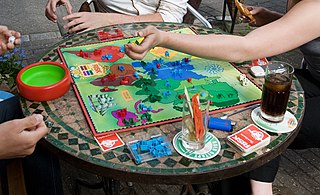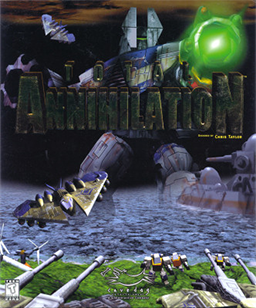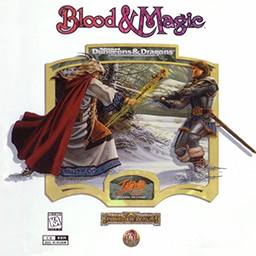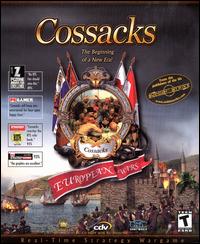
Risk is a strategy board game of diplomacy, conflict and conquest for two to six players. The standard version is played on a board depicting a political map of the world, divided into 42 territories, which are grouped into six continents. Turns rotate among players who control armies of playing pieces with which they attempt to capture territories from other players, with results determined by dice rolls. Players may form and dissolve alliances during the course of the game. The goal of the game is to occupy every territory on the board and, in doing so, eliminate the other players. The game can be lengthy, requiring several hours to multiple days to finish. European versions are structured so that each player has a limited "secret mission" objective that shortens the game.

Abalone is a two-player abstract strategy board game designed by Michel Lalet and Laurent Lévi in 1987. Players are represented by opposing black and white marbles on a hexagonal board with the objective of pushing six of the opponent's marbles off the edge of the board.
Real-time strategy (RTS) is a subgenre of strategy video games that does not progress incrementally in turns, but allow all players to play simultaneously, in "real time". By contrast, in turn-based strategy (TBS) games, players take turns to play. The term "real-time strategy" was coined by Brett Sperry to market Dune II in the early 1990s.

Total Annihilation is a real-time strategy video game created by Cavedog Entertainment, a sub-division of Humongous Entertainment, and was released in September 1997 by GT Interactive for Microsoft Windows and Mac OS. Two expansion packs were released, The Core Contingency on April 29, 1998 and Battle Tactics on July 20. After the closure of the Cavedog Entertainment in 1999, the intellectual property fell to Infogrames.
In video games, rushing or rushdown is a battle tactic similar to the blitzkrieg or the human wave attack tactics in real-world ground warfare, in which speed and surprise are used to overwhelm an enemy's ability to wage war, usually before the enemy is able to achieve an effective buildup of sizable defensive and/or expansionist capabilities.

In strategy games, a technology, tech, or research tree is a hierarchical visual representation of the possible sequences of upgrades a player can unlock. Because these trees are technically directed and acyclic, they can more accurately be described as a directed acyclic graph of technologies. The diagram is tree-shaped in the sense that it branches between each 'level', allowing the player to choose one sequence or another. Each level is called a tier and is often used to describe the technological strength of a player. Typically, at the beginning of a session of a strategy game, a player will start at tier 1, which offers only a few options for research. Each technology that a player researches will normally open up one or more new options, but may also, depending on the computer game, close off the paths to other options. The tech tree is the representation of all possible paths of research a player can take, up to the culmination of said sequence.
In strategy computer games, of both the turn-based and real-time varieties, a build order is a linear pattern of production, research, and resource management aimed at achieving a specific and specialized goal. They are analogous to chess openings, in that a player will have a specific order of play in mind, however the amount the build order, the strategy around which the build order is built or even which build order is then used varies on the skill, ability and other factors such as how aggressive or defensive each player is.
Micromanagement in gaming is the handling of detailed gameplay elements by the player. It appears in a wide range of games and genres, including strategy video games, construction and management simulations, and pet-raising simulations. Micromanagement has been perceived in different ways by game designers and players for many years: some perceive it as a useful addition to games that adds options and technique to the gameplay, something that is necessary if the game is to support top-level competitions; some enjoy opportunities to use tactical skill in strategic games; others regard it as an unwelcome distraction from higher levels of strategic thinking and dislike having to do a lot of detailed work. Some developers attempt to minimize micromanagement in a game's interface for this reason.

Mare Nostrum is a board game for 3 to 5 players, designed by Serge Laget and published in 2003 by Eurogames. It was also the name of a 1983 board game in the Fronte Mare series.
Axis & Allies: Pacific is a strategy board game produced by Hasbro under the Avalon Hill name brand. Released on July 31, 2001 and designed by Larry Harris, the designer of the original Axis & Allies game, Axis & Allies: Pacific allows its players to recreate the Pacific Theater of World War II.

King of Kings (キングオブキングス) is a turn-based strategy video game with wargaming elements for the Family Computer, released only in Japan. Kazuma Kaneko helped to design the characters for this video game; which became the inspiration for the characters in the video game Megami Tensei.
Players use different strategies while playing tennis to enhance their own strengths and exploit their opponent's weaknesses in order to gain the advantage and win more points.

Lords of Conquest is a strategy video game published in 1986 by Electronic Arts. It is based on the 1982 board game Borderlands by Eon Productions and developed by Eon's software division. It was marketed with the slogan "Better than Risk!"

Blood & Magic is a real-time strategy video game released by Interplay Productions in 1996 which uses the Dungeons & Dragons license.

Cossacks: European Wars is a real-time strategy video game for Microsoft Windows made by the Ukrainian developer GSC Game World. It was released on 24 April 2001. The game has an isometric view and is set in the 17th and 18th centuries of Europe. It features sixteen playable nations each with its own architectural styles, technologies and no limit on unit numbers.

Warhammer 40,000: Dawn of War – Dark Crusade is the second expansion to the real-time strategy video game Warhammer 40,000: Dawn of War developed by Relic Entertainment and published by THQ. Based on Games Workshop's tabletop wargame, Warhammer 40,000, Dark Crusade was released on October 9, 2006. The expansion features two new races, the Tau Empire and the Necrons. Including the Imperial Guard from Dawn of War's first expansion pack Winter Assault, a total of seven playable races in this expansion.
Tower defense (TD) is a subgenre of strategy games where the goal is to defend a player's territories or possessions by obstructing the enemy attackers or by stopping enemies from reaching the exits, usually achieved by placing defensive structures on or along their path of attack. This typically means building a variety of different structures that serve to automatically block, impede, attack or destroy enemies. Tower defense is seen as a subgenre of real-time strategy video games, due to its real-time origins, even though many modern tower defense games include aspects of turn-based strategy. Strategic choice and positioning of defensive elements is an essential strategy of the genre.
Strategy is a major video game genre that emphasizes thinking and planning over direct instant action in order to achieve victory. Although many types of video games can contain strategic elements, as a genre, strategy games are most commonly defined as those with a primary focus on high-level strategy, logistics and resource management. They are also usually divided into two main sub-categories: turn-based and real-time, but there are also many strategy cross/sub-genres that feature additional elements such as tactics, diplomacy, economics and exploration.

Boom Beach is a free massively multiplayer online real-time strategy game for iOS and Android, developed by Supercell. It was soft launched in Canada on 11 November 2013 and released worldwide on 26 March 2014.










